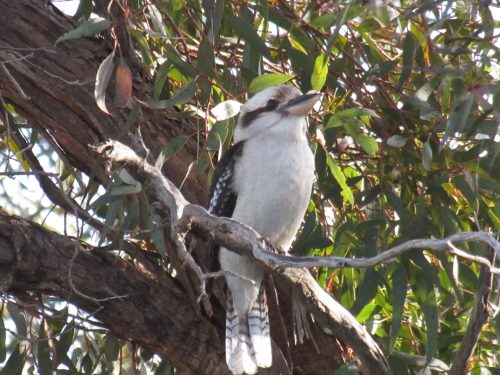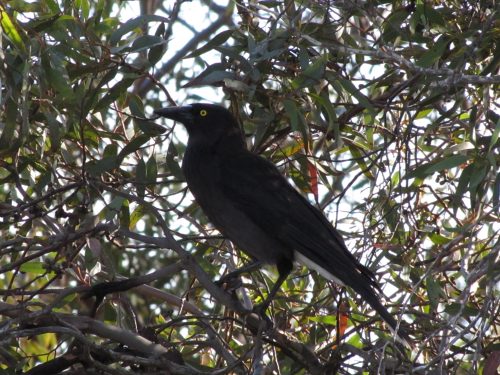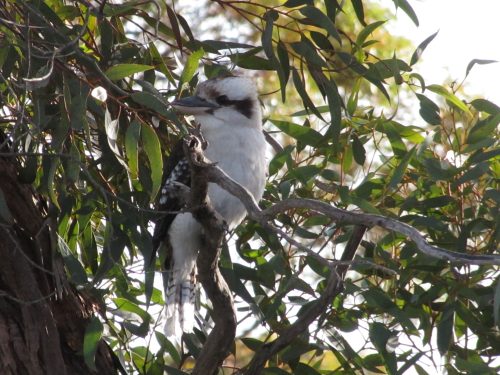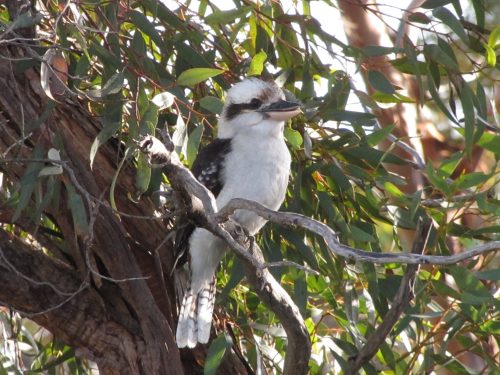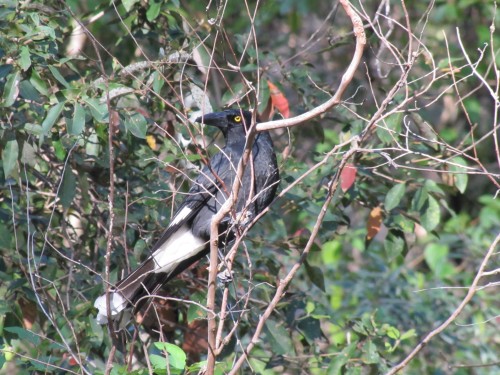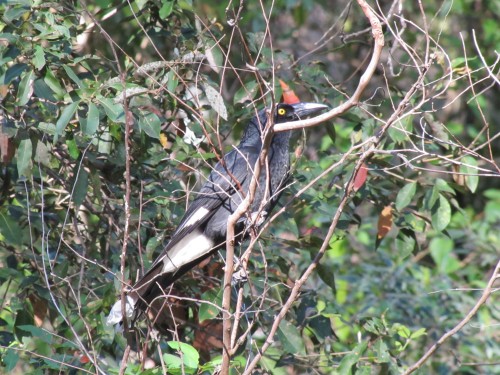An unusual visitor
Garden Birds
On my database, I record the birds I see in our garden, or on our five-acre block, or flying overhead. I have done this every month for well over 30 years now. In more recent times, I have started recording them on a weekly, and sometimes daily, occasions. This has built up a great base of information about the birds we have resident (present every day), regular visitors (every few weeks or months) and occasional (perhaps one or two sightings a year). So far, the tally is over 110 different species. (I don’t know the exact figure because my database is not quite up to date.)
Rare Visitors
Surprisingly, one of the rarer occasional visitors is the Laughing Kookaburra. This species is widespread throughout southern and eastern Australia and is common in many places. It is a widespread species here in the Murray Bridge region of South Australia too, especially along the Murray River. Despite that, it is a rare visitor to our garden. In fact, until a few weeks ago, our last sighting was just over ten years ago.
Harassment
The individual which paid us a recent visit did not have a good time. As I was getting some photos – shown on today’s post – a Grey Currawong kept on harassing it until it flew off in disgust at the poor welcoming party. I guess that the Currawong chased the kookaburra away to discourage it from visiting its nest, though I have not seen any evidence of the Grey Currawongs nesting so far this year. The Currawong itself is not slow about robbing the nests of other birds, either.
Further Reading:
- Grey Currawong – Birds in Backyards site
- Laughing Kookaburra – Birds in Backyards site
- Lunch Snatching Kookaburra
- A Laughing Kookaburra comes to lunch
Pied Currawong and that glaring eye
While we were having afternoon tea in the Lane Cove National Park in Sydney a Pied Currawong flew into a bush nearby. It stayed for a few moments before flying off again. When ever I see this species – and its cousin the Grey Currawong – I am taken by that glaring eye. It almost looks malevolent in intent.
Now it is very unscientific of me to assign human characteristics to a bird, but I can get away with it here because this doesn’t pretend to be a scientific site by any definition one cares to dredge up. I just want to share with the world my bird sightings, illustrating them where possible with photos I have taken.
Having said that, I must say that describing the currawong as being malevolent from a human point of view is not all that far from the truth. Granted – the currawong is not intentionally being nasty; it just seems that way from the viewpoint of compassionate humans – and a whole host of small birds and animals.
Currawongs eat a wide range of creatures, including smaller birds, bird eggs and nestlings, small reptiles, spiders, insects and will even steal take food at picnics, fruit from trees and garbage. All that may seem nasty and cruel to compassionate, animal-loving humans, but for the currawong it spells survival. The nestling of a honeyeater may mean the survival of the nestling of the currawong. It’s a huge, wild, nasty world out there.
And I still think its eye is rather evil.
Pied Currawongs, Botanic Gardens, Canberra
Pied Currawongs are a common bird species along the east coast of Australia, from Cape York down to far south eastern South Australia. Their distribution generally follows the Great Dividing Range but they can be found several hundred kilometres inland where suitable habitat exists.
Their preferred habitats include rainforests, woodlands, forests, coastal scrubs, farmland, parks, gardens and picnic grounds. Where they come in frequent contact with people they can become quite tame. The individual shown in the photos above and below was seen during our recent visit to the Australian National Botanic Gardens in Canberra. I was able to approach to within several metres. It basically took no notice of me filming him as it went about feeding in the trees and bushes, and on the ground.
The far reaching call of the currawong is one of the iconic sounds of the Australian bush. It is also quite at home in suburban backyards – like my son’s garden in Artarmon, Sydney – and even right in the CBD of our biggest cities.
A visit to Katoomba
On one of the days we spent in Sydney this last Christmas – New Year holidays we went as a family up into the Blue Mountains. We stopped for lunch at the village of Leura before going on a few miles to Katoomba. It is almost obligatory when passing through this area to visit Echo Point and have a look at the mountain scenery, and the Three Sisters in particular as shown in the photo above.
For those not familiar with this rocky outcrop, click on the image to enlarge it. The people half way down on the extreme left of the photo will give you an appreciation of the scale of this much photographed natural feature. As we left my son and I had a debate. What is the most photographed natural feature in Australia? For sheer numbers this lookout would have to be in the top five or ten I contended. Right up there with Uluru and Sydney Harbour.
While we were there I saw or heard very few birds. With the huge numbers of tourists present I’m not surprised. I did see several Sulphur-crested Cockatoos in the valley below, a few Welcome Swallows swooping around nearby and a solitary Crested Pigeon on the lawn near the tourist centre. Near the pigeon I saw a Pied Currawong eating an apple abandoned by a tourist. This area has a very rich range of bird life; they just have the sense to keep away from the busy tourist spots.
